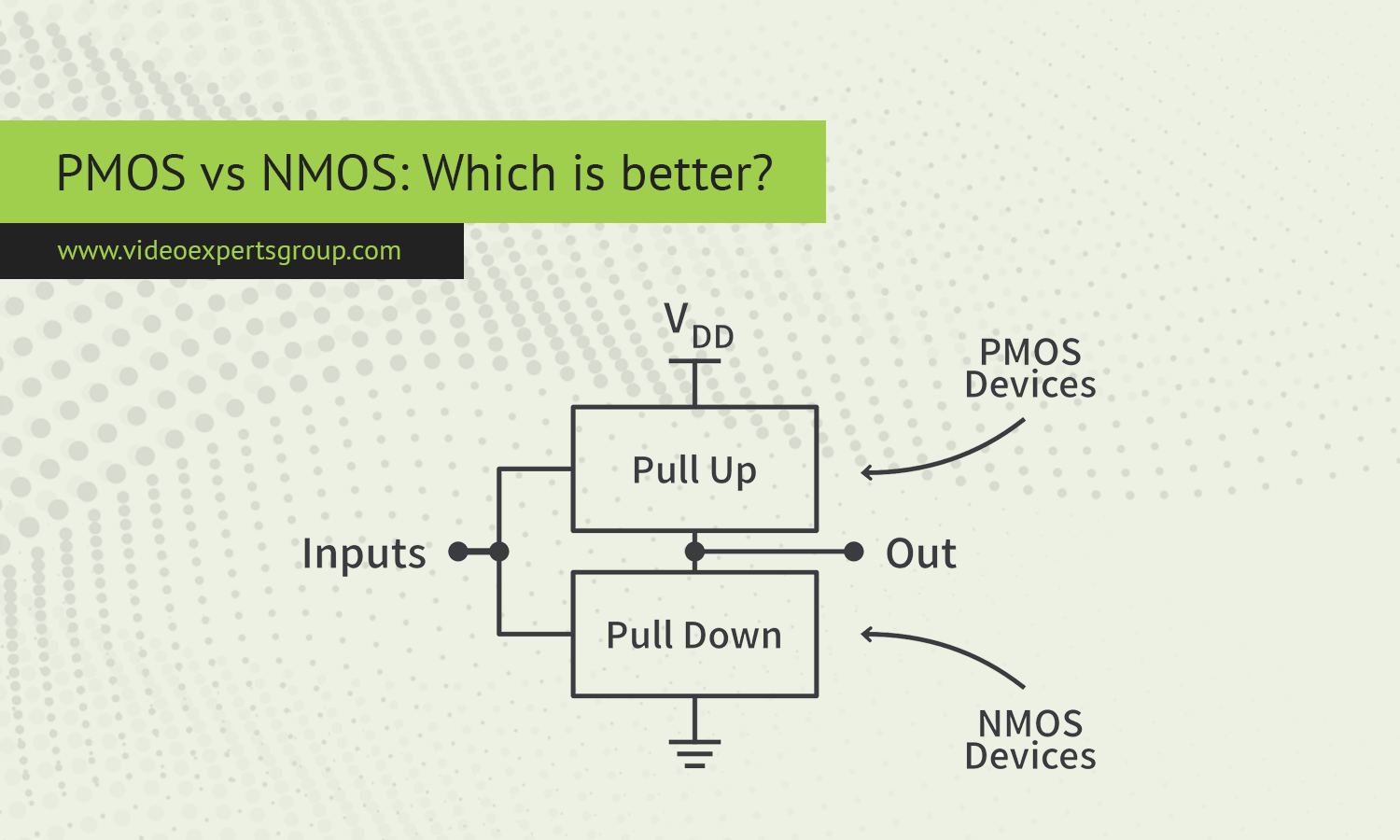When designing and building electronic circuits, two of the most important components to consider are PMOS (P-channel Metal-Oxide-Semiconductor) and NMOS (N-channel Metal-Oxide-Semiconductor) transistors. Both are types of MOSFETs (Metal-Oxide-Semiconductor Field-Effect Transistors), widely used in digital circuits, amplifiers, and switching applications. They form the foundation of CMOS (Complementary Metal-Oxide-Semiconductor) technology, which powers most modern electronic devices. But how do PMOS and NMOS differ? And which is better for specific applications? Let’s explore these questions by comparing the two in terms of their characteristics, performance, and applications.
Key Differences Between PMOS and NMOS
While PMOS and NMOS transistors perform similar functions — controlling the flow of current using an electric field — they differ in their structure, performance characteristics, and how they are used in circuits. The main differences can be broken down into several areas:
1. Channel Type and Charge Carriers
- NMOS: In NMOS transistors, the current is conducted by electrons, which are negative charge carriers. Since electrons have higher mobility than holes (positive charge carriers), NMOS transistors tend to be faster and more efficient in conducting current.
- PMOS: In PMOS transistors, the current is conducted by holes, which are positive charge carriers. Holes move slower than electrons, making PMOS transistors typically slower and less efficient compared to NMOS transistors.
2. Gate Voltage Requirements
- NMOS: NMOS transistors are turned on (allow current to flow) when a positive voltage is applied to the gate relative to the source. This makes NMOS transistors ideal for switching applications where a positive voltage signal is easier to generate and control.
- PMOS: PMOS transistors are turned on when a negative voltage is applied to the gate relative to the source. This characteristic makes PMOS useful in certain high-side switching applications, where negative gate control is preferred.
3. Speed and Efficiency
- NMOS: Due to the higher mobility of electrons, NMOS transistors are generally faster and more power-efficient than PMOS transistors. The lower resistance in the conductive channel of NMOS transistors leads to faster switching times, which is crucial in high-speed digital circuits such as microprocessors and memory.
- PMOS: PMOS transistors are slower compared to NMOS because of the lower mobility of holes. This results in higher resistance in the channel, making PMOS transistors less efficient in terms of speed and power consumption.
4. Power Consumption
- NMOS: In circuits where NMOS transistors are used alone, they tend to consume less power, especially during switching. This is because of their faster switching capabilities and lower on-state resistance.
- PMOS: PMOS transistors, being slower and having higher resistance, consume more power during operation. However, when combined with NMOS transistors in CMOS technology, the overall power consumption is reduced because only one type of transistor is on at a time in CMOS circuits.
5. Cost and Manufacturing
- NMOS: NMOS transistors are cheaper to manufacture and are more widely used in large-scale integration due to their superior speed and efficiency. They dominate digital logic designs where performance and cost are primary concerns.
- PMOS: PMOS transistors are generally more expensive to produce because of the lower demand and the specialized applications where they are used. However, they are still necessary in complementary designs like CMOS, which require both NMOS and PMOS transistors for proper operation.
Applications of PMOS and NMOS
Both PMOS and NMOS transistors have their advantages and are used in different types of circuits based on the specific needs of the application.
NMOS Applications
- Digital Logic Circuits: NMOS transistors are the preferred choice for digital logic circuits due to their fast switching speed. They are used extensively in the design of microprocessors, memory chips, and digital signal processors (DSPs).
- Low-power Electronics: NMOS transistors are ideal for low-power applications because they consume less power when switching between on and off states. They are commonly found in battery-powered devices such as smartphones, wearables, and IoT devices.
PMOS Applications
- High-side Switching: PMOS transistors are used in high-side switching applications where the load is connected to a higher voltage, and the transistor controls the connection between the load and the positive supply. They are often found in power management circuits and certain types of analog switching.
- CMOS Technology: PMOS transistors, paired with NMOS transistors, are essential in CMOS circuits. The complementary arrangement of PMOS and NMOS in CMOS technology reduces power consumption, making it the dominant technology for integrated circuits in devices like computers, smartphones, and digital cameras.
PMOS vs NMOS: Which is Better?
Determining whether PMOS or NMOS is better depends entirely on the specific requirements of the application. Here are a few general guidelines:
-
NMOS is better for speed and efficiency: In terms of performance, NMOS transistors are generally faster and more efficient due to the higher mobility of electrons. They are preferred for high-speed digital circuits and applications where switching speed is critical.
-
PMOS is better for high-side switching and complementary circuits: While slower, PMOS transistors are necessary in high-side switching and are crucial for forming complementary circuits in CMOS technology. This combination helps optimize power consumption in modern electronics.
-
CMOS is often the best choice for balanced performance: CMOS technology, which uses both NMOS and PMOS transistors, provides the best of both worlds. The combination of these transistors reduces power consumption while maintaining high-speed operation, making CMOS the preferred technology for large-scale integration and power-efficient designs.
In the debate of PMOS vs NMOS, neither is universally “better.” The choice depends on the specific needs of the application. NMOS transistors are faster and more efficient, making them ideal for most high-speed and low-power digital circuits. On the other hand, PMOS transistors are essential for certain high-side switching applications and are critical for CMOS technology, where they complement NMOS transistors to create highly efficient circuits. Ultimately, both transistors have their strengths and are often used together to create balanced, powerful electronic systems.
















